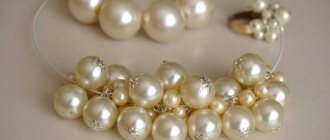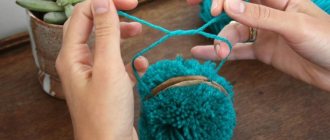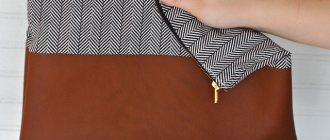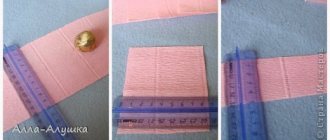Polymer clay was invented relatively recently. Masters have known about this material for no more than half a century. Today, sculpting with it is a very popular hobby for amateurs and a professional activity for experienced designers.
Buying polymer clay a couple of years ago was very problematic. Residents of various Russian cities ordered it from the capital or from other countries. Now almost all art salons or craft stores offer such plastic, where it lies next to knitting yarn, dyes and floss that are familiar to us. You can make many interesting crafts from this amazing material. These are not only souvenirs, but also a huge number of other things that will decorate our lives. You can also decorate a mug with polymer clay, a master class for which is described in this article.
Principle of operation
Today, polymer clay is one of the most common materials used for handicrafts. Craftsmen are attracted by its elasticity and non-toxicity. In addition, the crafts made from such material look simply fantastic.
Have you decided to decorate your mugs with polymer clay yourself? Then you should learn to work with this material. Half the success of your event will depend on the right choice of polymer. It is worth keeping in mind that ordinary self-hardening clay can be used to decorate mugs and other dishes. However, this material hardens in air after a certain time, which is not enough for beginners to give the product the required shape.
What is the best thing to buy in order to decorate a mug with polymer clay? The material can be of any variety. The main thing is to study the instructions and learn the rules of handling it.
Brands of polymer clay
Today, art salons and handicraft stores offer their customers many varieties of material. Which one should you buy to decorate your mug with polymer clay? Let's take a closer look at the brands of this material:
- A domestic manufacturer offers St. Petersburg plastic called “Tsvetik”. This is the cheapest option, but it is somewhat difficult to work with. Tsvetik brand products are quite hard and easily soiled. However, a person who has patience and skill can make beautiful things out of them.
- In order to decorate a mug with polymer clay, you can buy German material (Cernit). For some, it may seem, on the contrary, too soft in work. However, many craftsmen are attracted by the quality and color range of this plastic.
- The most popular brand in our country is “Fimo”. It is produced by the German company Eberhard Fabe. There are several varieties of this polymer. So, “Fimo Classic” is harder. The Fimo Soft brand is soft and easy to knead. Both types of material are available in a wide range of colors. The manufacturer offers polymer clay with glitter, transparent, and also glowing in ultraviolet light. All these types are perfect for those who decide to decorate a mug with polymer clay.
- Some craftsmen use material brought from America. This is polymer clay of two brands - “Kato” and “Scalpi”. It is not offered in Russian stores, but those who were able to purchase it need to be prepared for a fairly strong smell of the material, similar to the smell of Soviet gouache. In terms of its other qualities, this polymer is similar to other brands.
- Offers a whole line of polymer. But this material is usually chosen by sculptors.
In addition to solid plastic, all of the above companies produce liquid plastic, which is a gel. This is a viscous transparent material that hardens after heat treatment. Decorating mugs and spoons with polymer clay can also be done using gel, the possibilities of which are also endless.
Before you buy this amazing material, you should choose the product that will be decorated. Based on its color, you will need to decide on the tone of the plastic. Let there be two or three of them to begin with. Among them there should be a white block that can be used to dilute more saturated colors.
Decor of a mug with polymer clay
Polymer clay was invented relatively recently. Masters have known about this material for no more than half a century. Today, sculpting with it is a very popular hobby for amateurs and a professional activity for experienced designers. Buying polymer clay a couple of years ago was very problematic. Residents of various Russian cities ordered it from the capital or from other countries.
Now almost all art salons or craft stores offer such plastic, where it lies next to knitting yarn, dyes and floss that are familiar to us. You can make many interesting crafts from this amazing material. These are not only souvenirs, but also a huge number of other things that will decorate our lives. You can also decorate a mug with polymer clay, a master class for which is described in this article.
Varnish
If you are decorating a mug with polymer clay, how can you make the finished item more attractive? To do this, it should be varnished. This will give the mug gloss and greater expressiveness of the colors. In addition, varnish is necessary to enhance the strength of the item. In addition, it fixes the tinting paint on it.
What types of varnishes are there for plastic clay? The manufacturer offers matte, semi-matte and glossy coating materials. Such varnishes are sold in construction stores. What can you do to make a mug with polymer clay decor look most attractive? Experienced craftsmen advise purchasing acrylic water-soluble varnishes with a polyurethane base. This material is practically odorless, dries quickly and is easily washed off the brush. Within a day, a mug with polymer clay decor, coated with a similar varnish, will become resistant to mechanical damage and moisture.
Those who are doing this kind of work for the first time should remember that before applying varnish, the surface should be washed with dishwashing detergent or degreased with alcohol, and the coating process itself is best done with a synthetic brush.
Beautiful mug with polymer clay decor
Are the dishes in the store not exciting? Buy the cheapest tea cup and turn it into a designer piece with soul
In this master class we will show you how to make a beautiful decor for a mug with polymer clay with your own hands. Good-natured cats are everyone’s favorite and win-win theme. The decoration is based on a couple – a cat and a cat. This is not to say that the lesson is designed for beginners, but if you are a creative and neat person, you will definitely get the job done. Read the description carefully and look at the photos so as not to miss any details.
- Preparation of materials and tools
- Step-by-step decoration technique
Preparation of materials and tools
To work you will need:
- good quality baked polymer clay;
- a mug (in the master class it was used from transparent glass, but you can also decorate a plain ceramic one);
- nail polish remover;
- roller for rolling out plastic or pasta machine;
- stationery knife or scalpel;
- toothpicks and stacks to give the decor the desired relief;
- epoxy or other good glue that is resistant to water and heat.
If you have never worked with plastic, first get acquainted with this type of needlework. In essence, the work is similar to modeling from plasticine, but for the durability of the products they must be subjected to heat treatment.
Step-by-step decoration technique
First of all, arm yourself with a pencil and draw cat figures in full scale. At this stage, you can turn to those who draw better. The resulting sketch must be duplicated using tracing paper and cut out.
The first drawing will serve as a template; it should be placed inside a glass cup. Experienced needlewomen can do without such a hint and lay out a cat from polymer clay without a template.
Now take two pieces of mass of different shades and knead well. The material is pleasant to work with and does not cause any trouble.
Roll out one lump into a layer 2 mm thick.
Place a paper template on the layer and cut out the blank.
The result will be a recognizable silhouette of a cat.
Place the figurine on the mug in the intended place and press lightly with your hands, but do not press so as not to get unnecessary dents and prints.
Repeat the steps described above for the second piece of thermoplastic.
Also attach the silhouette of the second cat to the mug. At this stage, you can pull out the template with the drawing and put it next to it so you can see what to strive for.
Continuing to work on decorating the mug with your own hands using polymer clay, use a spherical stack to form small dents on the ears and where the eyes should be.
Imagining yourself as a sculptor, use a scalpel and a toothpick to carefully select the paws.
Pinch off a small piece of thermoplastic, roll and flatten it to form the bulge of the hind legs. Make a similar leg for the second cat.
To make the eyes, pinch off a tiny piece of white plastic, roll it into a ball, then flatten it and cut it into two equal pieces.
Place the eyes into the eye holes.
Roll the irises from pieces of a suitable shade. They can be made the same or different for both cats if there is multi-colored plastic.
For the noses, roll two pink balls and press them lightly in the desired places. Draw the nostrils with a toothpick.
Now take the black plastic and make the pupils - roll up a flagellum less than 1 mm thick and cut four pieces from it.
From the same flagellum, create beautiful frames for the pupils and eyelashes for the cat. Don't forget to add eyebrows and mustache.
To make the cat and cat clearly visible in the decor of the mug, decorate the girl with a bow made of polymer clay, and the boy with a butterfly. It's easy to make a butterfly from two triangles. For a rose, you need to roll up the flagellum, flatten it, twist it into a snail shape and straighten the edges using a toothpick. For a girl, you can make a bright heart or other decoration.
Form ponytails from thicker strands.
Complete the pair with a heart.
To make cats fluffy, add the necessary reliefs with a toothpick.
Now the mug with polymer clay decor needs to be baked in the oven. Refer to the recommendations and baking time indicated by the manufacturer on the plastic packaging; it may vary.
After baking, let the craft cool, then carefully remove the figures from the cup. Degrease the surface with nail polish remover. Then apply a thin layer of glue to the figures and press. It is important that the decor ends up in the same place, so you can insert the design before you remove the kittens.
Leave the beauty for a day so that the glue dries well and finally connects the parts. This cup can be safely used for its intended purpose, but it is important to take precautions - do not wash it in the dishwasher and do not rub the decor with a sponge or abrasive products.
A master class on decorating a mug with polymer clay can be used as a basis to decorate boring dishes with figures of other animals and flowers. See also the tutorial on turning an ordinary teaspoon into a masterpiece. And if you like working with plastic, learn how to make your own decorations and flowers using step-by-step instructions with photos on our website.
Knives
The polymer clay block must be cut into pieces of the required size. To do this, a craftsman decorating a mug with polymer clay (see photo below) will need knives.
They should be sharp enough. This will prevent the product from deforming during cutting. To decorate the mug, you can use a regular stationery knife or blade.
Gloves
After heat treatment of polymer clay, fingerprints of the master may remain on it. To ensure that the product is neat and does not waste unnecessary time polishing it, you must wear latex gloves. You can buy them at any pharmacy. Sometimes they are not very convenient when sculpting, but they greatly increase the quality of the work done.
Gloves should be selected according to hand size. After all, the tighter the latex adheres to the fingers, the more convenient it is for the craftsman to decorate the mug.
Other
What other materials will be needed to complete the planned work? In general, in order to make a thing from thermoplastic, you can use:
- special shapes (cutters) with which shapes can be easily cut out;
- a special syringe (extruder) equipped with various nozzles;
- pasta machine;
- texture sheets;
- powders, etc.
However, all this can be bought after you understand that sculpting products from polymer clay is your calling.
LiveInternetLiveInternet
3.
Stage 1 - take polymer clay and tools. We use premo. For processing - a cutter + cutters for wood or birch bark (with rounded blades), a stack, a toothpick, a metal needle with a slightly curved tip. To roll out polymer clay, we use a paste machine, but a regular kitchen rolling pin or glass bottle will do just fine. We make blanks for the dragon: a “leech” for the body and something for the head and future wings.
4.
Stage 2 “Leech” and other blanks are carefully processed using a set of simple tools shown in the photo. It turns out this is the “soup set” of the dragon.
5.
Stage 3 We make dragons in combination with leaves from the same polymer clay. We prepared homemade forms for the leaves, choosing the real leaves we liked for them. You can come up with any other option to complement the decor or make just a dragon. After all the polymer clay blanks are made, take a glass and glue the raw (not baked) polymer clay. We use E6000 glue (type of packaging in the photo).
6.
The process of gluing parts. We start by sticking on the leaves that serve as the background for the dragons. When it comes to the dragon "soup kit", the body is glued on first, then the wings and then the head. That is, the dragon is assembled into a single whole directly on the glass.
7.
Stage 4. After all the polymer decor is glued, we select suitable amethyst crystals and place them on the glass. We fix the stones with the same E6000 glue.
8.
Stage 5. Let's powder. Craft stores (like Leonardo) sell special metal powders for polymer clay. They come in different shades and different qualities. You can apply powder with anything: cotton swabs, brushes, fingers. We first apply different shades of lilac and purple.
9.
After the lilac-violet color scheme is placed on the glass, we shade the relief with bright silver powder.
Stage 6 - bake the glass. We have a separate oven for polymer curing, but you can bake it in a regular kitchen oven. Just be sure to place the product in a bag for baking meat and tie it tightly. Such bags are sold in any supermarket. The baking mode depends on the type of polymer clay; specific instructions are always written on the packaging. An important nuance: the product must be placed in a cold oven. And after baking, let the glass cool along with the oven. Do not remove or open the door until it cools down.
Stage 7 - gluing the remaining parts (if any) and final varnishing. Special varnishes for polymer clay are sold in stores like Leonardo.
10.
Glasses in golden tones. Glasses are functional, you can drink from them, they can be washed. Naturally, they require careful and careful handling. Wash with cool water, do not soak. Do not scrub polymer decor with kitchen sponges. Use detergents only for the glass part.
https://vk.com/glinomania
Preparatory stage
So, you have decided to decorate your mug with polymer clay. How to do this kind of work with your own hands? To begin with, you should take some boring mug, which should become bright and original.
It should be laid on the surface in such a way as to make working as convenient as possible. For this, you can use, for example, a baby blanket.
Beginning of work
If your idea is to decorate a mug with polymer clay, how to make this work? First, cut a piece of plastic to the required size. Next, you should knead it thoroughly. Only in this case will the clay become soft and plastic. To improve the working properties of the material, you can use a special product. It's called a plasticizer. Experienced needlewomen advise purchasing Moldmaker brand products. A few peas of this product are enough to soften a whole pack of clay. Alternative materials may include Vaseline or creams. The warming procedure is also suitable for softening.
It happens that clay, especially fresh clay, sticks very strongly to your hands. In such cases, experienced craftsmen mix it with a harder brand or leave it on a sheet of paper for several hours. However, it is worth keeping in mind that all the above-described manipulations will not help the material into which paint has already been applied.
It is very important that there are no air bubbles left in the clay. This will damage your product in the future. When heated, the air will expand, which will warp the plastic.
After this, you should take a cotton swab and, moisten it in nail polish remover or glass cleaner, wipe the surface of the mug. After that we make an applique on it.
Start decorating the mug
If your idea is to decorate a mug with polymer clay, how to make this work? First, cut a piece of plastic to the required size. Next, you should knead it thoroughly. Only in this case will the clay become soft and plastic. To improve the working properties of the material, you can use a special product. It's called a plasticizer.
Experienced needlewomen advise purchasing Moldmaker brand products. A few peas of this product are enough to soften a whole pack of clay. Alternative materials may include Vaseline or creams. The warming procedure is also suitable for softening. It happens that clay, especially fresh clay, sticks very strongly to your hands. In such cases, experienced craftsmen mix it with a harder brand or leave it on a sheet of paper for several hours.
However, it is worth keeping in mind that all the above-described manipulations will not help the material into which paint has already been applied. It is very important that there are no air bubbles left in the clay. This will damage your product in the future. When heated, the air will expand, which will warp the plastic. After this, you should take a cotton swab and, moisten it in nail polish remover or glass cleaner, wipe the surface of the mug. Next we make an applique on it.
Baking
A mug with an applique made of polymer clay should not be afraid of water, fade or lose its original appearance over time. To preserve all these qualities, the product must undergo heat treatment. What device is suitable for this? To bake polymer clay, use a gas or electric oven, as well as an electric mini-oven. Microwaves are not suitable for this purpose. The hardening process of polymer clay occurs only when exposed to high temperature. The principle of heating food in a microwave is to create waves. However, exceptions to the rules are possible here too. Some models of modern microwave ovens are equipped with a function that allows you to set the required baking temperature. If such a possibility exists, then clay can be placed in this household appliance.
What else should you consider when decorating a mug with polymer clay? MK (master class) involves accurate monitoring of the temperature indicated on the clay packaging. Exceeding it will cause the material to begin to burn and release toxic substances. As a rule, this temperature ranges from 110 to 130 degrees. That is why it will be very convenient for the master if the oven he uses has a built-in thermometer. The clay does not bake for long. The hardening time for the application applied to the mug is ten minutes.
How to bake polymer clay correctly
Polymer clay or, as the craftsmen call it, plastic, is a plastic material for creating small figures (beads, flowers). This mass is similar to plasticine and has a characteristic specific smell. It is easy to work with even a novice craftswoman.
Specialized handicraft stores offer a large selection of domestic and foreign manufacturers. The most common of them: Artifact, Fimo, Cernit, Sculpey. This material makes amazing sets of jewelry, hair accessories, brooches and simply sweet toys. However, it is not enough to simply sculpt figures. To achieve the final result, heat treatment is required. We will tell you below how to do this at home.
Why burn?
Clay is an excellent raw material for applied arts. To preserve the craft, it is necessary to carry out firing. Only then will it acquire strength and can be subjected to subsequent mechanical finishing (polished, drilled, painted). After proper preparation, such things are not afraid of getting wet, losing shape and not fading.
How to properly perform firing at home?
Under the influence of high temperatures, plasticizers evaporate from it, and polymerization occurs. After this, the product is durable and will serve for a very long time.
Before starting a lesson, you should carefully read the manufacturer's recommendations: for some types, 110C is required, and for others - 130C. Compliance with this rule is mandatory!
If the heating is insufficient, hardening will not take place, and the resulting product will not meet the stated requirements - it may become brittle, darken or completely spread, releasing chemical compounds that are dangerous to the body.
Precautionary measures
It is advisable to carry out work wearing rubber gloves and a respirator. The room in which this process is carried out must be well ventilated. If you work with children, they are also recommended to use products to protect their skin and respiratory tract, and not to be left without adult supervision.
In case of non-compliance with safety requirements, the absence of a substrate, melting of the plastic itself, which is included in the composition, may occur and a significant release of harmful toxic compounds. Then immediately turn off the device that is used and urgently ventilate the room. At the same time, the little helpers are taken out of this room immediately! If there were food products in the kitchen at that moment, they should not be eaten!
Under no circumstances should parts be baked and food prepared at the same time! It should also be taken into account that it is forbidden to make tableware from plastic, which will then interact with food!
This does not apply to decorating dishes - a trend that is gaining popularity at the moment. Indeed, in this case, the decorations are outside and do not come into contact with food in any way.
Firing in an electric/gas stove
At home, this process can be carried out using a regular kitchen stove. Modern electric ovens have accurate built-in thermometers that make it easier to set the required temperature. In the usual Soviet gas stoves you can also work with polymer. If such a tile does not have a built-in thermometer, you can simply buy one at a specialized hardware store or on our website.
Stages and actions:
- Prepare the models for baking, place them on a baking sheet covered with baking parchment (for baking).
- Preheat the oven (the manufacturer indicates the required value on each package).
- Load and bake. The standard period is half an hour. But if multiple heat treatment is required (for example, small parts are baked first, and then large ones are joined together and baked again), primary firing is performed and lasts 10-15 minutes. The duration of the secondary is calculated based on how much time was spent on the first. In total, the operation should not exceed 40 minutes.
It is important to consider that the thicker the resulting item, the longer it will take to bake (no more than 30-40 minutes). Of course, it would be great to have a separate stove that is not used for cooking. But many handmade craftsmen rarely have the opportunity to keep two units at home at once. Therefore, after events, all internal surfaces are washed, dried and ventilated!
Application of a special sleeve
Why do craftswomen use this option for baking?
The material of this “air-packet pipe” does not allow harmful substances that are released during hardening to pass through, therefore, there is no need to wash work surfaces.
How to use?
- a plate or wooden board.
- Open the bag, carefully place the base inside and tie the ends on both sides.
- Carefully transfer to a baking sheet.
- Place the sheet for baking.
The heat level remains the same as if the heat treatment was carried out without the package, that is, it is set strictly according to the manufacturer’s instructions!
Using a multicooker
This type of oven can also be used. However, you will need a replacement bowl in which food will never be cooked. Water is poured and the work is immersed inside. 10 minutes is enough.
This method is not very good, since it does not result in an even coating, and besides, you will have to purchase an additional container.
Microwave - not used!
Using a microwave oven for heat treatment purposes is strictly prohibited! Some manufacturers write on the packages that it is possible to operate devices with the “Aerogrill” function. However, it is worth remembering that this oven does not set the heating level. Microwaves cause molecules to vibrate, heating them up.
At high temperatures, toxic gas is released, which can damage the device and stop functioning in the future. Even if it does not break down, it will be prohibited to use it for household needs!
This is another great option - an air fryer.
This mini-electric oven is convenient due to its small size and the ability to choose the appropriate degree. What a nice feature is that it has a good all-round view!
- Place the completed parts on a heat-resistant vessel (ceramic or glass dish).
- Place on the grill.
- Set mode.
- Bake for 5 to 40 minutes depending on the thickness of the item.
Remember that before cooking, the electric oven must be thoroughly washed and dried. It will be better if you use it only for hobby.
Cooking polymer
Some needlewomen cook rather than bake. To cook properly, you will need:
- Choose a container (pan) for the procedure that will never be used for cooking;
- Wait until it boils;
- Place the crafts in boiling (but not boiling) water and cook for 15 minutes;
- After this period, remove them with a slotted spoon and pour cold water over them until completely cool.
Sometimes they first put the thing in a saucepan, fill it two-thirds full and then boil it. This method is not recommended due to the fact that during cooking the edges become deformed, become uneven, and a white coating may form, which then has to be cleaned off with sandpaper or a file. Plus, sometimes bright colors turn pale.
Secrets and tricks
- Some experienced craftswomen advise using an additional thermometer, even if there is a built-in thermometer, since it very often “tells lies.”
- For the very first time, it is advisable to practice on one copy - set the required degrees, note the time, carefully remove it, cool it, check the strength, and only then “load” the entire batch for baking.
- As a surface, you can use not only glass and ceramics, but also thick cardboard, foil, a baking sleeve, wood, cotton wool and paper napkins.
- When choosing an iron sheet, it is preferable to choose silver or lattice, since black enameled ones are thicker, therefore, when heated, they can melt the objects that are on them.
- A layer of baking parchment is spread on the work surface or a wooden board or earthenware/glass base (for example, a plate) is placed.
- The base is placed on the wire rack! Otherwise, everything may melt and spread over the bars of the grill.
- Small elements are processed for 5-10 minutes, and large ones – up to 40 minutes.
- To ensure that a large part is well baked, foil is initially placed in the middle when sculpting. This saves raw materials and improves quality.
- Flat elements can be baked by placing them on unnecessary ceramic tiles.
- Small flowers and beads can be placed on a toothpick, and the other end can be inserted into a wad of foil and placed on the base. Then the procedure will happen faster, since the product receives uniform treatment on all sides, unlike those items that are just lying there.
- Metal fittings (for rings, earrings, chains) can be inserted into raw blanks in advance. Nothing will happen to metal.
- To give different textures, salt and sugar are sprinkled in, which are subsequently shaken off.
- To avoid cleaning the oven, you can use a glass saucepan with a lid marked “microwave safe,” or use a baking bag.
- To ensure that there are no fingerprints left in exposed areas in the end, you can lay out “semi-finished products” while wearing rubber gloves.
How to check readiness?
The test is carried out after complete cooling. Until the creation has cooled down, it is very fragile and easily deformed. Don't poke it with toothpicks or matches.
Some types of polymers become hard in the end (Artifact), others become rubbery and slightly flexible (Fimo, Sculpey). Thin plates bend slightly, but do not break. The color practically does not change, only in some varieties there is a darkening, but not much.
Important to remember
- This is not food grade plastic! This is a toxic substance!
- Before the start of classes, all food products are removed from the room where work will be done.
- Don't forget about personal protective equipment.
- First, warm it up, and only then lay it in. If you do not have an internal mini-thermometer, you should purchase one from hardware stores or online stores.
- Follow the instructions: if you do not follow the instructions, your sculpture may deteriorate: it may not be baked enough, become brittle, or melt. Always carefully read the recommendations on the packaging and follow the conditions for thermal finishing!
- If you notice a pungent unpleasant odor, you must immediately turn off the appliance, open the window and leave until the kitchen is completely ventilated. If you experience headaches or nausea, you should immediately seek medical help!
- Children are under constant adult supervision.
- If food is found (not covered with film and not put in the refrigerator), it is immediately thrown away!
- At the end, be sure to wash your hands with soap.
- Don't forget to wash the oven with detergent!
If you follow the instructions on the packaging and follow safety precautions, you will get wonderful things from polymer clay that will delight you and your customers.
It is best to buy sets of raw materials and accessories in specialized online stores, for example, in ours. The catalog presents many options that can be used by both beginning craftswomen and those who have been involved in Hand Made for a long time. Select only high-quality materials for your jewelry.
You may also be interested in: How to properly photograph your work Rules for writing selling text for Hand Made Work schedule for the Jubiju online store
End of the process
After heat treatment, the mug should be removed from the oven. You need to carefully separate the baked applique from it. Next we need epoxy glue. It is made independently, adhering to all the requirements of the instructions. A thin layer of glue should be applied to the back of the completed application, as well as to the mug, which we wipe again with nail polish remover or glass cleaner. After this, the applique is pressed tightly against the mug and subsequently adheres to it very well.
At the next stage of work you will need a matte or glossy varnish. They cover the finished application. The varnish will protect the surface of the product from damage.
How does the application behave in operation? A cup made in this way can be safely washed. But you should not put it in the dishwasher or use abrasive products on the decor.











